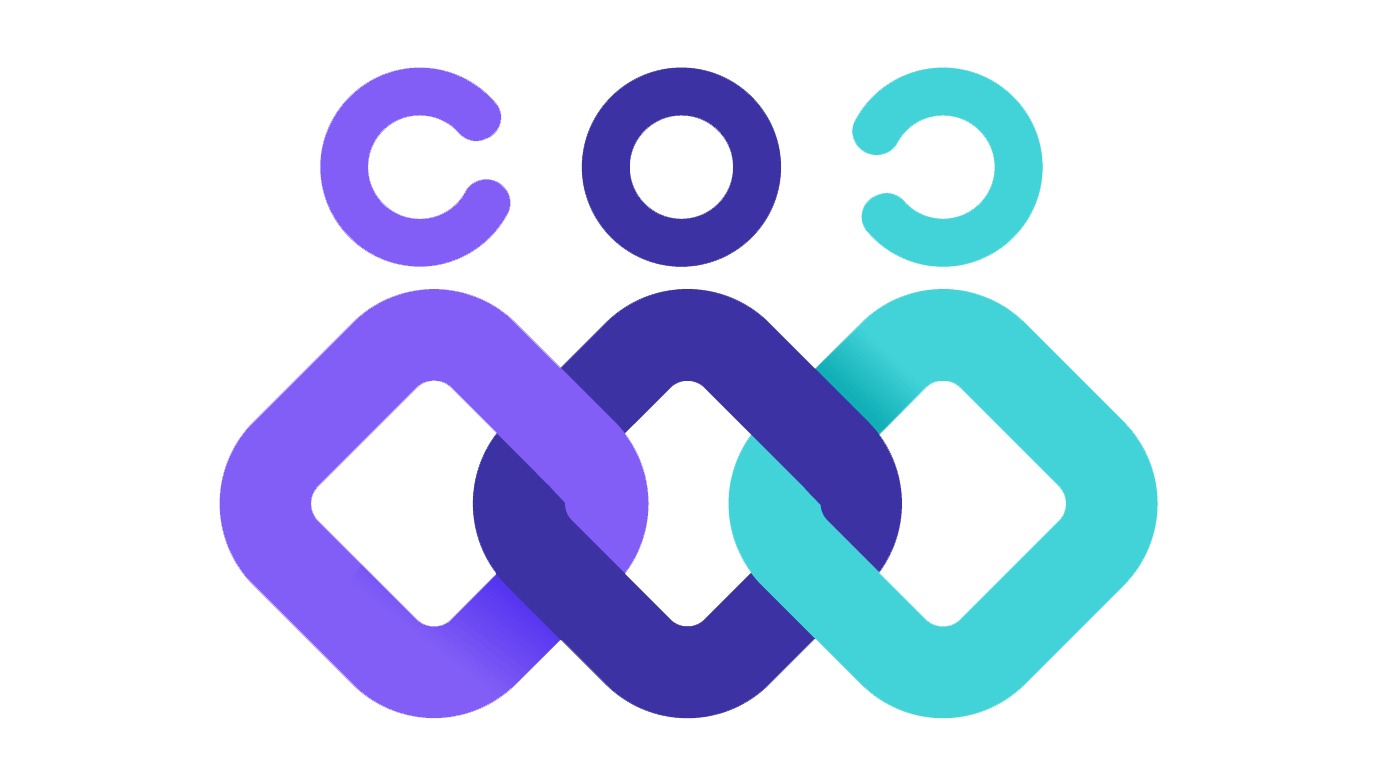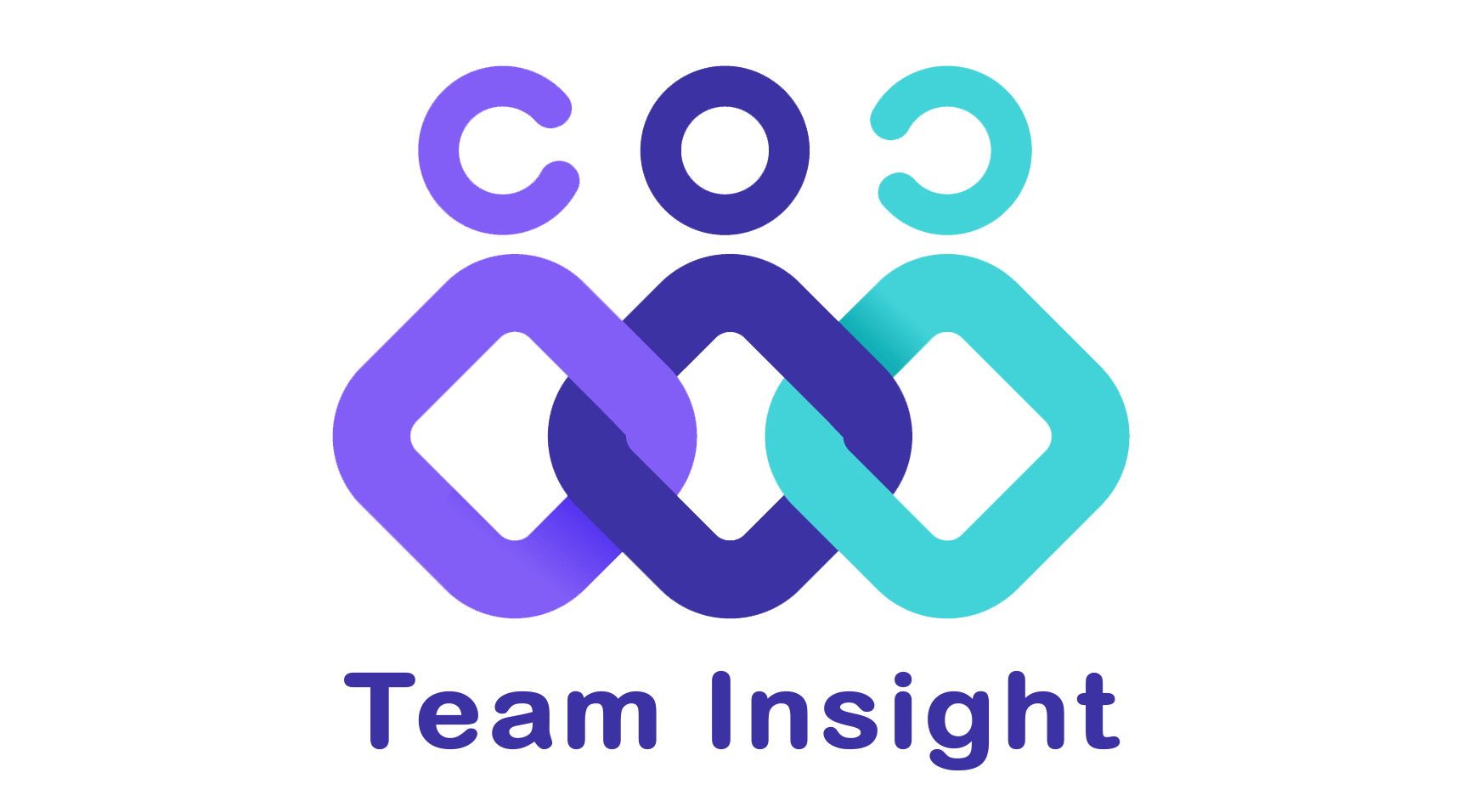- Home
- Product
-
Product Overview
Team Insight combines performance management, recognition, and local rewards in a single loop — so teams grow fairly, stay engaged, and feel valued.
PRODUCT
Employee Performance Management Software
Tools to improve performance and growth tracking.
Employee Recognition & Rewards Software
Build positivity by valuing daily wins.
Employee Engagement Software for SMEs
Drive productivity with clear access and accurate tracking.
OKR & KPI Software for Small Teams
Tools to improve performance and growth tracking.
-
- Resources
- Capture leads and make buying easySed ut perspiciatis unde omnis iste natus error sit voluptatem accusantium doloremque laudantium, totam aperiam, eaquecy epsa abillo inventore veritatis architecto beatae
- Complete documentation
- Working materials in Figma
- 100GB cloud storage
- 500 team members
- Complete documentation
- Working materials in Figma
- 100GB cloud storage
- 500 team members
 Capture leads and make buying easySed ut perspiciatis unde omnis iste natus error sit voluptatem accusantium doloremque laudantium, totam aperiam, eaquecy epsa abillo inventore veritatis architecto beatae
Capture leads and make buying easySed ut perspiciatis unde omnis iste natus error sit voluptatem accusantium doloremque laudantium, totam aperiam, eaquecy epsa abillo inventore veritatis architecto beatae- Complete documentation
- Working materials in Figma
- 100GB cloud storage
- 500 team members
- Complete documentation
- Working materials in Figma
- 100GB cloud storage
- 500 team members
Capture leads and make buying easySed ut perspiciatis unde omnis iste natus error sit voluptatem accusantium doloremque laudantium, totam aperiam, eaquecy epsa abillo inventore veritatis architecto beatae- Complete documentation
- Working materials in Figma
- 100GB cloud storage
- 500 team members
- Complete documentation
- Working materials in Figma
- 100GB cloud storage
- 500 team members
 Capture leads and make buying easySed ut perspiciatis unde omnis iste natus error sit voluptatem accusantium doloremque laudantium, totam aperiam, eaquecy epsa abillo inventore veritatis architecto beatae
Capture leads and make buying easySed ut perspiciatis unde omnis iste natus error sit voluptatem accusantium doloremque laudantium, totam aperiam, eaquecy epsa abillo inventore veritatis architecto beatae- Complete documentation
- Working materials in Figma
- 100GB cloud storage
- 500 team members
Latest Product Updates
Strong Signals
Accelerate Your Monitoring Efforts with ‘Team Insight,’ an AI-Powered Solution.
Smart Ideation
Enhance Your Creative Process with GenAI-Powered Ideation.
Knowledge Hub: Articles, Webinars...Explore our blog, webinars, and case studies to stay informed. Visit the Help Center for all the resources you needContent summary: Discover insights and expert advice through our blog to stay updated with the latest trends and solutions.
Discover insights and expert advice through our blog to stay updated with the latest trends and solutions.
Join our webinars for expert-led discussions and real-time learning from industry leaders.

Explore our case studies to see how our solutions drive success in real-world scenarios.

Visit our Help Center for quick answers, resources, and support to assist you every step of the way.
Articles, Webinars...
Explore our blog, webinars, and case studies to stay informed. Visit the Help Center for all the resources you need
RESOURCES
Blog Articles
Discover insights and expert advice through our blog
Webinars
Join our webinars discussions and learning from industry leaders.
CaseStudies
Explore our case studies
Help Center
Visit our Help Center for quick answers, resources.
-
- Success Stories
- Login
- Pricing
- Our Team
- Company
-
A Story of Growth, Trust, and Vision
Our journey is built on a commitment to empowering people and increasing employee productivity. By fostering trust and innovation, we aim to create a work environment where growth and success go hand in hand.
About Us: A team driven by innovation, focused on growth and productivity.
A team driven by innovation, focused on growth and productivity.
Contact us with any questions or feedback. Let’s boost productivity together.
A Story of Growth...
Our journey is built on a commitment to empowering people and increasing employee productivity. By fostering trust and innovation, we aim to create a work environment where growth and success go hand in hand.
ABOUT OUR COMPANY
About Us
A team driven by innovation, focused on growth and productivity.
Contact Us
Contact us with any questions or feedback. Let’s boost productivity together.
-
- Home temp

Introduction
The shift to hybrid work has pushed organizations to rethink almost every aspect of how they manage people, measure performance, and maintain alignment. One practice that has become absolutely essential in this new environment is continuous feedback for hybrid teams. Unlike traditional office setups—where managers could rely on informal moments to stay connected—hybrid work removes those spontaneous opportunities for quick conversations, course corrections, and recognition. As a result, continuous feedback for hybrid teams has evolved from a “nice to have” into a core operational discipline.
Managers today must guide employees they may rarely see in person. HR leaders must maintain consistency across distributed workflows. Employees must understand expectations without the benefit of daily visibility. The old once-a-year performance review cycle simply cannot support these needs. Hybrid work introduces communication gaps, delayed signals, and misalignment risks that only a well-designed system of continuous feedback for hybrid teams can solve.
But continuous feedback is not about overwhelming people with more messages or micromanaging their daily work. Instead, it provides a structured rhythm for clarity, connection, and development. It ensures achievements don’t go unnoticed just because they happened remotely. It helps teams correct small issues before they become larger performance problems. And most importantly, continuous feedback for hybrid teams creates a culture where people feel supported, guided, and visible, regardless of where they work.
This playbook is designed to help managers and HR leaders build an effective feedback system that fits today’s hybrid reality. You’ll learn how to structure a sustainable rhythm, choose the right communication channels, deliver both async and live feedback, use message templates that actually work, and measure the impact of your efforts over time. Whether you’re leading a small distributed team or shaping organization-wide practices, this guide shows you how continuous feedback for hybrid teams can strengthen performance, engagement, and alignment across every layer of your workforce.
Why Continuous Feedback Matters More in Hybrid Work
As organizations transition to distributed and flexible work models, the importance of continuous feedback for hybrid teams becomes even more evident. Hybrid teams operate across different locations, different work rhythms, and sometimes different time zones. Without intentional communication, even strong performers may lose clarity on expectations or feel disconnected from their manager’s perspective. This is exactly where continuous feedback for hybrid teams becomes a stabilizing force: it closes gaps before they widen.
Hybrid work changes how teams understand each other. Challenges that were once visible—like an employee struggling with a task, or a project drift happening mid-week—can now remain unseen for weeks. Managers no longer benefit from spontaneous touchpoints that naturally occurred in shared offices. And employees no longer receive the frequent informal signals that historically helped them self-correct throughout the year.
Below are the key reasons continuous feedback for hybrid teams is now mission-critical.
Hybrid Work Creates Invisible Gaps
When team members split their time between remote and in-office work, communication becomes more fragmented. A simple misalignment can turn into a multi-week setback because nobody noticed the issue early. Continuous feedback for hybrid teams restores visibility by ensuring that managers and employees check in regularly, exchange context, and identify risks before they turn into problems.
Annual Reviews Fall Short in Distributed Environments
Traditional performance reviews were never designed for the modern hybrid workplace. They assume shared time, shared space, and consistent observation. None of that exists in hybrid environments. Employees get surprised during annual reviews because they weren’t receiving small corrections along the way. Managers feel unsure because they’ve seen only a portion of the work.
With continuous feedback for hybrid teams, performance insights become ongoing—not stored up for once a year. This reduces anxiety, increases fairness, and gives everyone a more accurate understanding of their strengths and development areas.
Timely Input Drives Agility
Hybrid work forces teams to move faster while coordinating less frequently. That combination only works when feedback is timely. The more delayed a correction is, the more costly the impact becomes. Continuous feedback accelerates decision-making, strengthens resilience, and ensures that employees don’t repeat the same challenge for months without knowing.
Organizations that build a ritual around continuous feedback for hybrid teams become significantly more adaptive. They discover and resolve issues faster, celebrate great work in real time, and support skill-building before opportunities pass.
Psychological Safety Is Harder to Maintain Remotely
Hybrid environments can unintentionally create emotional distance. A short message in Slack might sound harsher than intended. A delayed response might be misinterpreted as lack of interest. Without shared physical presence, trust can degrade quietly.
Regular, honest, human-centered conversations make employees feel seen. Continuous feedback for hybrid teams fosters psychological safety because communication is consistent, predictable, and anchored in growth—not fear.
When managers show up regularly with constructive, respectful guidance, employees become far more willing to share concerns, admit blockers, and ask for support. That transparency is the backbone of a healthy hybrid culture.
The Bottom Line
Hybrid work requires new habits, new systems, and new rhythms. Organizations that rely on outdated review cycles will continually struggle with performance issues that could have been prevented. In contrast, teams that embrace continuous feedback for hybrid teams build alignment, momentum, and trust—even when they’re not in the same room.
Core Principles of Effective Continuous Feedback
Building an effective system of continuous feedback for hybrid teams requires more than good intentions. It requires structure, clarity, and shared agreements about how feedback flows between managers and employees. Hybrid work environments depend on predictable communication—not just spontaneous conversations—so feedback must be designed in a way that feels fair, consistent, and supportive across different working styles.
Below are the foundational principles that help continuous feedback for hybrid teams actually work in real organizations.
1. Consistency Over Intensity
The biggest mistake managers make is believing they need dramatic weekly conversations to sustain continuous feedback. In reality, continuous feedback for hybrid teams is built on small, steady interactions. It thrives when feedback becomes part of the regular rhythm of work—easy, expected, and lightweight.
Consistency creates:
predictable performance alignment
reduced anxiety around evaluation
stronger trust between managers and employees
faster correction of minor missteps
Even a simple bi-weekly check-in message contributes to the foundation of continuous feedback. The key is staying present.
2. Clarity Without Micromanagement
Hybrid employees value autonomy, but autonomy doesn’t mean isolation. Continuous feedback for hybrid teams must maintain clarity around expectations, quality standards, deadlines, and project priorities without sliding into micromanagement.
Managers should focus on:
outcomes, not surveillance
guidance, not control
clarifying goals, not prescribing every step
This balance is critical. When feedback is unclear, employees feel lost. When it is too controlling, employees feel suffocated. Continuous feedback works best when it supports independence while keeping everyone aligned.
3. Feedback Must Be Timely
In a hybrid environment, delayed feedback feels heavier than ever. A problem unnoticed for three weeks can derail an entire sprint. A missed recognition can leave employees feeling invisible.
For continuous feedback for hybrid teams, timing is everything. This means:
sharing feedback as close to the event as possible
not waiting for one-on-one meetings to address urgent issues
celebrating wins in real time
addressing misunderstandings immediately instead of letting them grow
Timely feedback nurtures improvement while the context is still fresh.
4. Both Positive and Corrective Feedback Matter
Some organizations over-focus on praise to maintain morale in hybrid work. Others over-focus on corrective notes to maintain performance. The truth is: continuous feedback for hybrid teams needs both. Both types of feedback support development and engagement in different ways.
Positive Feedback
reinforces the right behaviors
boosts visibility for remote contributors
strengthens morale and reduces burnout
Corrective Feedback
prevents small issues from becoming large
builds transparency
supports skill development
A healthy culture requires balance. Too much positivity feels insincere; too much correction feels demoralizing.
5. Feedback Should Be Multi-Directional
Hybrid work reduces opportunities for informal interactions, making feedback from peers, managers, and employees equally important. Continuous feedback for hybrid teams should not only flow top-down. It must also travel horizontally and bottom-up.
This includes:
peer feedback on collaboration
upward feedback on management effectiveness
team-led reflections after sprints or projects
When feedback is multi-directional, teams become more self-aware and managers get a clearer view of what’s actually happening in day-to-day work.
6. Psychological Safety Is Non-Negotiable
Hybrid teams can only benefit from continuous feedback if employees feel safe sharing their challenges. Psychological safety must be intentionally built. Without it, feedback feels like criticism—not support.
Creating psychological safety in continuous feedback for hybrid teams involves:
asking open-ended questions
normalizing mistakes as part of learning
recognizing vulnerability
responding calmly, even during difficult conversations
When people trust that feedback is meant to help—not punish—they become far more receptive and engaged.
7. Feedback Must Be Documented, Not Buried in Chats
Hybrid communication often gets lost in Slack, Teams, or email threads. To make continuous feedback for hybrid teams scalable and trackable, important feedback needs a central place—whether in performance software, shared notes, or structured check-in forms.
Documentation helps:
prevent misremembering
support fair evaluations
track growth over time
provide transparency
Documentation does not mean bureaucracy. It means clarity and fairness.
8. Personalization Matters
Not every employee processes feedback in the same way. Personality differences, working styles, and cultural expectations all shape how feedback is received. Managers must tailor their approach while still maintaining consistency.
In effective continuous feedback for hybrid teams, the tone, timing, and channel of feedback can adapt to what works best for each person—without sacrificing fairness.
Building the Ideal Feedback Rhythm for Hybrid Teams
To make continuous feedback for hybrid teams work in practice, organizations must define a clear rhythm—a predictable cadence that ensures employees receive guidance, recognition, and alignment without overwhelming them. A structured rhythm removes guesswork. Managers know when to check in, employees know when to expect feedback, and HR knows the process is consistent across the company.
A strong rhythm doesn’t mean rigid scheduling. Instead, it brings order to distributed environments where communication can easily become scattered. The right rhythm ensures that continuous feedback for hybrid teams flows smoothly, supports performance, and strengthens connection.
Here’s a complete framework for designing a healthy feedback rhythm.
1. Daily Micro-Interactions (Lightweight Pulse Touchpoints)
Hybrid work reduces spontaneous interactions, so daily micro-touchpoints serve as replacements for hallway moments. These are not full conversations—they are small signals that reinforce connection and visibility. For continuous feedback for hybrid teams, these daily exchanges keep communication warm and prevent misunderstandings.
Examples include:
a quick Slack reaction
a one-sentence acknowledgment of progress
a follow-up question for clarity
a micro appreciation message
Daily interactions maintain presence without creating pressure. They show that even in hybrid work, the manager is engaged and aware.
2. Weekly or Bi-Weekly Alignment Check-Ins
These are short conversations (10–20 minutes) focused on goals, blockers, and direction. They are the backbone of continuous feedback for hybrid teams. Regular check-ins help both sides stay aligned, surface issues early, and plan the week effectively.
Typical agenda:
What progress was made?
What’s coming next?
What support is needed?
Any risks or uncertainties?
Weekly alignment ensures that remote contributors never feel like they’re working alone.
3. Monthly Development Conversations
While weekly check-ins focus on tasks, monthly sessions focus on growth. For continuous feedback for hybrid teams, these conversations provide space for deeper reflection and development dialogues that can’t fit into quick updates.
Topics may include:
skill-building priorities
career goals
behavioral feedback
long-term performance improvement
new opportunities
Monthly development conversations keep employees anchored in a sense of progression, even when they’re physically distant.
4. Quarterly Deep-Dive Feedback Reviews
These are structured sessions that bring together ongoing feedback and turn it into a comprehensive view of progress. They act as a mini performance review—but lighter, faster, and more collaborative.
Quarterly reviews support continuous feedback for hybrid teams by:
synthesizing trends
identifying patterns
discussing long-term objectives
updating role expectations
revisiting OKRs or KPIs
This rhythm ensures teams don’t wait a full year to address significant themes in performance.
5. Continuous Recognition in Real Time
Recognition is one of the most powerful accelerators of engagement in hybrid work. People who are partially or fully remote often feel unseen. That’s why real-time recognition is critical within any system of continuous feedback for hybrid teams.
Recognition should:
celebrate daily wins
highlight teamwork
acknowledge extra effort
reinforce company values
It doesn’t need to be formal—quick, authentic messages often work best. The goal is visibility.
6. Async Feedback Loops for Flexibility
Hybrid teams thrive when feedback isn’t limited to live conversations. Async communication allows managers and employees to reflect more deeply and respond at the right time.
Effective async channels for continuous feedback for hybrid teams include:
shared documents for ongoing notes
voice messages for nuance
short video updates
structured feedback forms
performance software comments
Async feedback ensures nobody is blocked by time zones or meeting overload.
7. Crisis or Urgent Feedback Moments
Sometimes feedback cannot wait. If a project is drifting, a client is unhappy, or a deadline is at risk, managers should deliver immediate feedback. In a hybrid environment, delays multiply consequences quickly.
Urgent feedback is still part of continuous feedback for hybrid teams because continuous does not mean scheduled only—it means responsive.
Characteristics of urgent feedback:
focused
timely
behavior-based
solution-oriented
it protects outcomes and maintains accountability.
Putting It All Together: A Hybrid Feedback Cadence
Below is a sample rhythm you can implement for continuous feedback for hybrid teams:
| Cadence | Purpose | Format |
|---|---|---|
| Daily | Micro alignment | Slack, Teams, quick messages |
| Weekly | Task alignment | Short meeting or async form |
| Monthly | Growth development | 1:1 meeting |
| Quarterly | Performance synthesis | Deep-dive session |
| Real-Time | Recognition | Public or private messages |
| As Needed | Urgent feedback | Direct call or message |
This rhythm ensures the right balance between structure and flexibility. It gives employees clarity, managers visibility, and HR a scalable framework.
Choosing the Right Feedback Channels for Hybrid Teams
Delivering continuous feedback for hybrid teams effectively depends not just on frequency but also on the channels you use. Hybrid work environments blur the lines between in-office and remote work, making it essential to choose the right medium for each type of feedback. The wrong channel can reduce clarity, increase stress, or make feedback feel impersonal.
A thoughtful approach ensures that feedback is received, understood, and acted upon. Here’s how to choose the right channels for continuous feedback for hybrid teams.
1. Synchronous Channels: Live, Real-Time Feedback
Synchronous channels are essential when context, nuance, or sensitivity is involved. They include:
Video calls (Zoom, Teams)
Phone calls
Live chat sessions
In-person meetings
Use synchronous channels for continuous feedback for hybrid teams when:
The feedback involves behavior correction
Misunderstandings could escalate
Emotional or sensitive issues need careful handling
Clarification and dialogue are required
Synchronous feedback builds trust because employees experience empathy and tone directly. Even short 10–15 minute calls can prevent small issues from growing into major problems in hybrid teams.
2. Asynchronous Channels: Flexible and Documented Feedback
Asynchronous feedback allows for thoughtful, reflective responses and accommodates different time zones. Common channels include:
Slack or Microsoft Teams messages
Email
Feedback features in performance management software
Video recordings or screen captures
For continuous feedback for hybrid teams, asynchronous channels work best for:
Reinforcing behaviors
Sharing recognition
Summarizing past conversations
Providing detailed instructions or guidance
Async feedback ensures continuity across hybrid teams and creates a record for reference, making follow-up easier and transparent.
3. Recognition Channels: Celebrating Wins Remotely
Recognition is a key component of continuous feedback for hybrid teams. Remote employees often feel invisible, so intentionally creating spaces for recognition strengthens engagement and morale.
Effective recognition channels include:
Dedicated chat channels for peer-to-peer praise
Digital recognition platforms with points or badges
Team newsletters highlighting achievements
Spotlight segments during virtual meetings
Recognition should be frequent, specific, and aligned with company values. Celebrating success in real time reinforces positive behavior and supports retention in hybrid teams.
4. Multi-Directional Feedback Channels
To maximize impact, continuous feedback for hybrid teams should flow in multiple directions:
Top-down from managers to employees
Bottom-up from employees to managers
Peer-to-peer within and across teams
Multi-directional feedback ensures different perspectives are heard, improves team collaboration, and builds a culture where everyone feels empowered to share insights.
5. Guidelines for Channel Selection
When deciding which channel to use for continuous feedback for hybrid teams, consider:
Sensitivity of the topic: Is it corrective, developmental, or celebratory?
Complexity of the feedback: Does it require a detailed discussion?
Need for documentation: Will it be referenced later?
Employee preference and work rhythm: Remote or hybrid employees may respond better to async feedback depending on their schedule.
A good rule of thumb:
Sensitive or complex topics → synchronous
Reinforcement, recognition, or documentation → asynchronous
Using the right channel consistently ensures feedback is effective, trusted, and actionable.
Templates and Examples for Continuous Feedback in Hybrid Teams
One of the biggest challenges managers face is knowing exactly how to phrase feedback—especially in a hybrid setting. Written messages, async tools, or brief video calls can all be misinterpreted if not crafted carefully. Using templates helps managers and HR leaders maintain clarity, consistency, and effectiveness while practicing continuous feedback for hybrid teams.
Below are examples for positive feedback, corrective feedback, recognition, and live conversations that work across hybrid teams.
1. Positive Feedback Examples
Positive reinforcement is critical for engagement and morale, particularly when team members may rarely meet face-to-face. For continuous feedback for hybrid teams, timely and specific praise makes employees feel valued and seen.
“I really appreciated how you structured the client presentation today. Your clarity helped the team move forward quickly.”
“Thanks for completing the report ahead of schedule—this gives everyone more time to act on your insights.”
“Great collaboration on the sprint planning session. Your suggestions improved the workflow for the whole team.”
“The documentation you shared was thorough and clear. It will save the team a lot of time.”
2. Corrective or Developmental Feedback Examples
Constructive feedback is equally important in continuous feedback for hybrid teams, especially when issues need to be corrected before they escalate.
“I noticed the last update had missing details. Let’s review the process together to ensure everything is captured next time.”
“The approach in the last client call could have included more context. Here’s how we can structure it better.”
“Some tasks were delayed this week. Let’s explore how to prioritize work more effectively.”
“Your recent draft had a few assumptions that weren’t aligned with the team goals. Let’s clarify expectations upfront next time.”
Corrective feedback works best when tied to specific behaviors and paired with guidance or support.
3. Recognition Messages for Hybrid Teams
Recognition reinforces positive behavior and keeps remote employees visible. For continuous feedback for hybrid teams, recognition can happen in real-time or asynchronously.
“Shoutout to [Name] for resolving the issue so quickly—your proactive approach made a huge difference.”
“Thanks to [Name] for helping a teammate troubleshoot a blocker today. Your support keeps the team moving.”
“Celebrating [Name] for completing the documentation ahead of schedule—this will benefit everyone.”
“[Name], your contributions to the client project were outstanding. Great attention to detail and teamwork!”
Recognition helps reinforce culture, morale, and engagement across hybrid teams.
4. Live 1:1 Conversation Starters
Even in hybrid settings, synchronous conversations remain vital. Structured prompts can help managers conduct meaningful discussions as part of continuous feedback for hybrid teams.
“What’s one accomplishment you’re proud of from this week?”
“Is there anything blocking your progress that I can help remove?”
“How do you feel about your current workload and priorities?”
“Are there areas where you’d like more guidance or support?”
“Which skills or projects would you like to focus on next?”
Starting with open-ended questions encourages dialogue, builds trust, and ensures feedback is collaborative.
5. Examples of Poor Feedback vs. Improved Feedback
Poorly delivered feedback often frustrates employees or reduces trust. Here’s how to improve it in hybrid settings:
Poor: “You need to communicate better.”
Improved: “I noticed that some updates on project X were delayed. Let’s agree on a weekly check-in so everyone stays aligned.”
Poor: “Your report wasn’t good.”
Improved: “The report missed a few key metrics. Here’s what we can add for clarity, and I’m happy to review the next draft together.”
Poor: “Do better next time.”
Improved: “The approach had gaps that impacted results. Let’s outline a plan for improvement together.”
Using thoughtful phrasing is critical for continuous feedback for hybrid teams, especially when communication is asynchronous.
Building a Culture that Supports Continuous Feedback in Hybrid Teams
Implementing continuous feedback for hybrid teams is not only about tools, templates, or schedules. Without a supportive culture, even the best systems fail. Hybrid environments naturally reduce informal interactions, so creating a culture that normalizes feedback is essential for engagement, alignment, and growth.
Here’s how organizations can foster a feedback-friendly culture for hybrid teams.
1. Establish Clear Norms
Teams should define shared expectations for continuous feedback for hybrid teams. Norms help employees understand when, how, and why feedback happens, which reduces anxiety and ensures consistency.
Guidelines might include:
Frequency of check-ins and feedback
Preferred channels for different types of feedback
How to phrase constructive vs. positive feedback
Expectations for peer-to-peer feedback
How to handle disagreements or clarifications
Clear norms reduce ambiguity, making feedback part of the team’s daily workflow rather than a sporadic or stressful event.
2. Train Managers and Leaders
Most managers have not been formally trained in giving effective feedback—especially in a hybrid context. Training equips leaders to deliver continuous feedback for hybrid teams in ways that are constructive, timely, and empathetic.
Training should cover:
Coaching techniques for remote employees
Behavioral, not personal, feedback
Asking open-ended questions
Handling defensiveness or resistance
Using async vs. synchronous channels effectively
Recognizing and celebrating contributions remotely
Investing in manager skills directly improves the quality of feedback and employee trust.
3. Normalize Micro-Feedback
Large, formal reviews are not enough. Continuous feedback for hybrid teams thrives on small, frequent interactions—what we call micro-feedback. These short, low-pressure exchanges help reinforce desired behaviors and prevent small issues from escalating.
Examples include:
Quick recognition for a job well done
A short note highlighting a correction or clarification
Immediate acknowledgment of progress
Brief suggestions for improvement
Micro-feedback makes feedback a habit, not a rare event, which is essential for hybrid teams.
4. Support Multi-Directional Feedback
A strong culture of continuous feedback for hybrid teams is multi-directional. Feedback should not only flow from managers to employees but also:
From employees to managers
Between peers
Across different teams
Multi-directional feedback encourages transparency, strengthens collaboration, and ensures that every voice is heard, even when employees are not co-located.
5. Personalization and Empathy
Hybrid employees have different working styles, personalities, and communication preferences. Tailoring continuous feedback for hybrid teams to individuals ensures that feedback is effective and well-received.
Personalization strategies:
Adjust the timing and channel of feedback
Use language appropriate to the employee’s communication style
Be mindful of cultural differences
Show empathy in tone and delivery
When employees feel understood, they are more likely to act on feedback and engage proactively.
6. Make Recognition a Habit
Recognition is a key driver of engagement in hybrid teams. Embedding recognition into the feedback culture strengthens both morale and performance. For continuous feedback for hybrid teams, celebrate achievements consistently and publicly when appropriate.
Recognition can be:
Peer-to-peer shoutouts
Team-wide acknowledgments in meetings
Digital badges or points
Highlighting contributions in newsletters
Regular recognition reinforces behaviors you want to see and keeps hybrid employees connected to the team.
Tools That Enable Continuous Feedback in Hybrid Teams
Implementing continuous feedback for hybrid teams is much easier and more scalable when the right tools are in place. While culture, rhythm, and manager skill are critical, technology ensures feedback is consistent, visible, and actionable across distributed teams. Hybrid work introduces challenges such as time zone differences, asynchronous schedules, and limited informal observation, making tools a key enabler of effective continuous feedback.
Here’s a breakdown of essential tools that support continuous feedback for hybrid teams.
1. Employee Performance Management Software
Performance management platforms are central to continuous feedback for hybrid teams. They provide a structured way to track goals, document feedback, and ensure alignment across the organization.
Key features:
Real-time goal tracking
Logging of feedback and development notes
360-degree feedback from managers, peers, and direct reports
Dashboards that summarize performance trends
Using these tools helps hybrid teams maintain transparency and ensures feedback is recorded and actionable, even when employees and managers are working remotely.
2. Recognition and Rewards Software
Recognition platforms are crucial for reinforcing positive behaviors in continuous feedback for hybrid teams. They make celebrating achievements easy, timely, and visible to the whole team.
Benefits:
Public recognition channels
Peer-to-peer praise and endorsements
Points, badges, or rewards for accomplishments
Automated reminders to recognize team members
Recognition software ensures employees feel seen, engaged, and motivated, even when working in different locations.
3. Employee Engagement Tools
Employee engagement software complements continuous feedback for hybrid teams by providing insights into team sentiment, workload, and engagement levels. These tools allow managers to proactively respond to potential issues before they affect performance.
Typical features:
Pulse surveys
Feedback forms
Anonymous suggestions
Team health dashboards
Engagement tools create a continuous feedback loop that captures employee perspectives and supports data-driven decisions in hybrid environments.
4. Communication and Collaboration Tools
Hybrid teams rely heavily on tools that facilitate both synchronous and asynchronous communication. Proper use of these tools supports continuous feedback for hybrid teams by making interactions seamless, timely, and trackable.
Examples:
Slack, Microsoft Teams, or similar messaging platforms
Video conferencing for live check-ins
Shared documents or project management boards
Feedback threads or collaborative spaces for peer feedback
When communication tools are integrated into a feedback rhythm, they reduce misunderstandings and make performance insights more accessible.
5. Why Tools Matter for Continuous Feedback in Hybrid Teams
Without the right tools, continuous feedback for hybrid teams can become inconsistent, informal, or lost in scattered chats and emails. Tools:
Make feedback visible to employees and managers
Store feedback for future reference
Automate reminders for check-ins and recognition
Provide analytics to measure the health of your feedback culture
Technology doesn’t replace the human aspect of feedback but amplifies it, allowing hybrid teams to operate at scale while maintaining a strong culture of growth and recognition.
Metrics & KPIs to Measure Continuous Feedback Effectiveness in Hybrid Teams
Implementing continuous feedback for hybrid teams is only part of the equation. To ensure it’s actually improving performance, engagement, and alignment, organizations need clear metrics and KPIs. Measuring effectiveness allows managers and HR leaders to adjust the approach, celebrate successes, and identify areas for improvement.
Here are the key metrics to track for continuous feedback for hybrid teams.
1. Frequency and Consistency of Feedback
Track how often feedback occurs across your hybrid teams. Key questions include:
Are weekly check-ins happening as planned?
Are employees receiving recognition at least once per week?
Are peer-to-peer feedback loops active?
High frequency and consistent delivery indicate that continuous feedback for hybrid teams is embedded in daily routines rather than being sporadic.
2. Employee Engagement and Satisfaction
Feedback should positively impact engagement. Metrics may include:
Employee satisfaction scores from pulse surveys
Net Promoter Score (NPS) for workplace experience
Self-reported alignment with goals
Strong engagement signals that continuous feedback for hybrid teams is making employees feel heard, supported, and valued.
3. Goal Alignment and Progress
Tracking goal achievement shows whether feedback is translating into performance improvements. KPIs include:
Percentage of OKRs or KPIs met
Progress against project milestones
Alignment between individual and team goals
These metrics reveal whether continuous feedback for hybrid teams is effectively driving outcomes and reducing misalignment.
4. Recognition Metrics
Recognition is a key part of feedback in hybrid work. Track:
Number of recognition messages per employee
Participation in peer recognition programs
Frequency of public acknowledgment in meetings or digital channels
Recognition metrics demonstrate how continuous feedback for hybrid teams is reinforcing positive behavior and building morale.
5. Quality of Feedback
It’s not just about frequency—quality matters. Consider measuring:
Specificity of feedback (behavior-based vs. vague)
Timeliness of feedback delivery
Employee perception of helpfulness
High-quality feedback ensures that continuous feedback for hybrid teams leads to actionable insights and meaningful growth.
6. Career Development and Retention
Finally, feedback should support growth and retention. KPIs include:
Promotions or role changes over time
Skill development progress
Employee turnover related to engagement issues
When continuous feedback for hybrid teams is effective, employees feel supported, develop professionally, and are less likely to leave.
Tracking these metrics provides evidence that continuous feedback for hybrid teams is working and highlights areas where managers or HR need to adjust processes. Measurement ensures that feedback is not just a practice—it’s a strategic tool for hybrid team performance.
Common Mistakes to Avoid When Implementing Continuous Feedback in Hybrid Teams
Even the best intentions can fail if organizations approach continuous feedback for hybrid teams without awareness of common pitfalls. Hybrid work introduces unique challenges, and understanding what not to do helps managers, HR leaders, and team members maintain a healthy, effective feedback culture.
Here are the most common mistakes and how to avoid them.
1. Infrequent or Sporadic Feedback
One of the biggest failures is treating feedback as occasional rather than continuous. If feedback only happens during quarterly or annual reviews, employees feel disconnected, and small issues grow into major challenges. Continuous feedback for hybrid teams only works when it’s consistent, predictable, and embedded in daily workflows.
Avoid this by:
Setting weekly or bi-weekly check-ins
Encouraging micro-feedback for quick course corrections
Using recognition tools regularly to highlight wins
2. Overloading Employees with Feedback
Too much feedback, delivered without structure, can overwhelm employees and reduce receptiveness. Bombarding hybrid teams with messages can cause confusion and stress. Continuous feedback for hybrid teams is about quality, not quantity.
Avoid this by:
Prioritizing actionable, specific feedback
Separating recognition, developmental guidance, and urgent corrections
Using async channels for reinforcement rather than live interruptions
3. Feedback Lacking Specificity
Vague feedback—such as “do better” or “improve communication”—is unhelpful, especially in hybrid settings where employees may not have the benefit of in-person clarification. Continuous feedback for hybrid teams must be behavior-focused and actionable.
Avoid this by:
Linking feedback to observable actions
Providing examples of success
Suggesting concrete next steps
4. Ignoring the Emotional Component
Feedback isn’t just about tasks—it’s about people. Hybrid work reduces non-verbal cues, making empathy more important. Managers who ignore tone, context, or employee emotions risk undermining trust. Continuous feedback for hybrid teams requires human-centered delivery.
Avoid this by:
Practicing active listening
Acknowledging employee effort
Using video or voice calls for sensitive conversations
5. Relying Solely on Managers
Feedback should not flow only from manager to employee. When only managers provide input, the feedback loop is incomplete. Continuous feedback for hybrid teams is most effective when it includes peer-to-peer, upward, and cross-team feedback.
Avoid this by:
Encouraging peer recognition programs
Soliciting upward feedback for leadership
Integrating multi-directional feedback into performance software
6. Neglecting Measurement and Follow-Up
Finally, many organizations fail to track the impact of feedback. Without measurement, it’s impossible to know if continuous feedback for hybrid teams is actually improving performance or engagement.
Avoid this by:
Tracking frequency, quality, and timeliness of feedback
Measuring engagement and recognition
Reviewing progress against goals and career development plans
Avoiding these mistakes ensures that continuous feedback for hybrid teams strengthens alignment, performance, and engagement rather than creating frustration or confusion.
A 30-Day Implementation Plan for Continuous Feedback in Hybrid Teams
Rolling out continuous feedback for hybrid teams can feel daunting without a structured approach. A 30-day plan provides a clear roadmap to embed feedback habits, align managers and employees, and establish consistent practices that scale across hybrid environments.
Here’s a practical plan to get started:
Week 1: Assess and Prepare
Audit current feedback practices: Identify existing channels, frequency, and gaps in continuous feedback for hybrid teams.
Define objectives: Determine what the organization wants to achieve with continuous feedback (alignment, engagement, recognition, performance improvement).
Select tools: Choose performance management, recognition, and collaboration tools that will support continuous feedback for hybrid teams.
Train managers: Introduce the principles of effective feedback, focusing on clarity, timeliness, and empathy.
Week 2: Establish a Feedback Rhythm
Set a cadence: Define daily, weekly, monthly, and quarterly touchpoints for continuous feedback for hybrid teams.
Communicate expectations: Ensure all team members understand when and how feedback will be delivered.
Create documentation templates: Standardize how feedback is recorded to maintain clarity and consistency.
Pilot micro-feedback: Encourage managers and peers to provide small, actionable feedback in real time.
Week 3: Launch Recognition and Multi-Directional Feedback
Implement recognition channels: Launch peer-to-peer recognition programs, dedicated chat channels, or digital tools for celebrating wins.
Promote multi-directional feedback: Encourage employees to provide feedback to managers and peers, ensuring continuous feedback for hybrid teams is inclusive and collaborative.
Monitor adoption: Track participation and provide guidance where usage is low.
Week 4: Measure, Reflect, and Iterate
Collect metrics: Evaluate frequency, quality, and impact of feedback using KPIs such as engagement scores, recognition activity, and goal alignment.
Review manager performance: Check if managers are delivering continuous feedback for hybrid teams consistently and effectively.
Solicit employee feedback: Ask for input on clarity, usefulness, and timing of feedback.
Adjust the process: Refine channels, cadence, and training based on insights to improve adoption and impact.
Key Takeaways from a 30-Day Plan
A structured plan ensures that continuous feedback for hybrid teams is implemented efficiently and consistently. It creates predictability, reduces confusion, and builds a foundation for a feedback-rich culture. When done right, even the first 30 days can significantly improve alignment, engagement, and performance across hybrid teams.
Conclusion
In today’s hybrid work environment, traditional performance management and sporadic feedback are no longer sufficient. Continuous feedback for hybrid teams is essential to maintain alignment, drive engagement, recognize achievements, and ensure performance stays on track across distributed workforces.
By implementing continuous feedback for hybrid teams, organizations can:
Close communication gaps created by remote or hybrid work
Correct small issues before they escalate
Recognize accomplishments in real time
Build psychological safety and trust
Strengthen alignment between individual, team, and organizational goals
Effective continuous feedback relies on a combination of culture, rhythm, channels, tools, and metrics. When managers and HR leaders adopt structured approaches, provide timely recognition, and personalize feedback to individual employees, continuous feedback for hybrid teams becomes a powerful driver of performance and engagement.
Remember, this is not a one-time initiative. Hybrid teams thrive when feedback is ongoing, actionable, and visible. By embedding continuous feedback for hybrid teams into everyday work, organizations can create an environment where employees feel valued, connected, and empowered to grow—regardless of where they are working.
With the right tools, training, and habits, continuous feedback for hybrid teams transforms from a challenge of hybrid work into a strategic advantage, ensuring teams remain agile, motivated, and high-performing.













